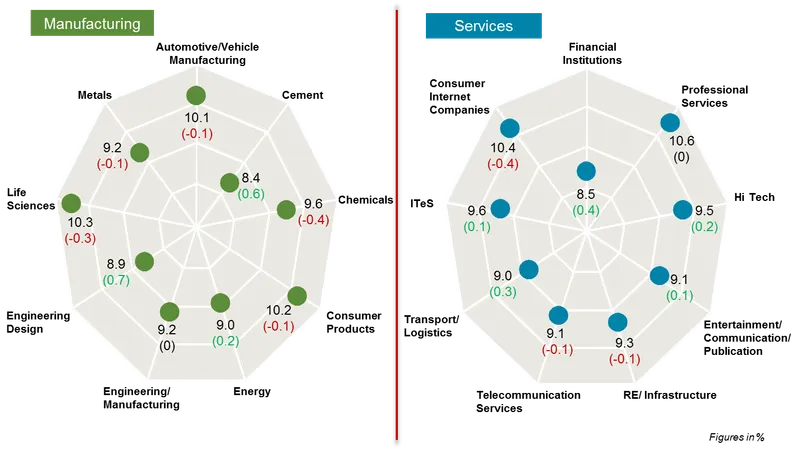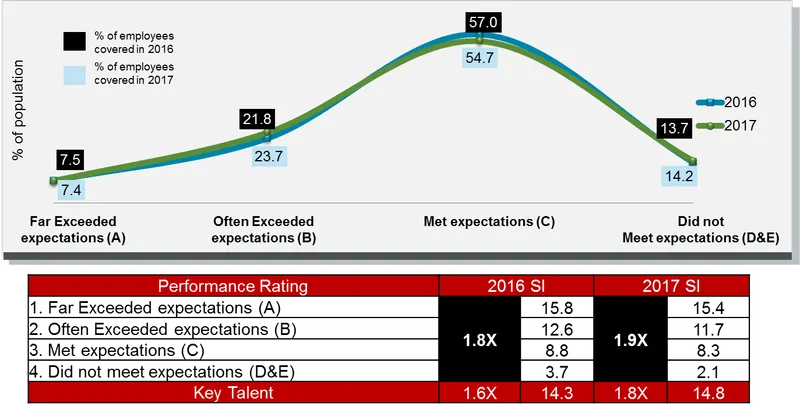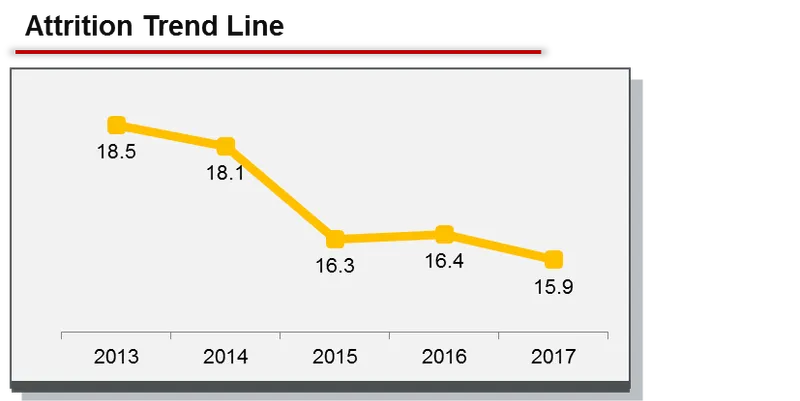Pay and performance: the paradigm shift at the Indian workplace
Given the broad economic context prevailing in the country and a strong focus on financial prudence, organisations have to adapt. They have to respond to the velocity of change, manage expectations from stakeholders and constantly deliver in order to stay competitive.

‘Show me the money.’
There is a much a revered and spoken line from the 1996 Hollywood film Jerry Maguire mouthed by Tom Cruise, which is repeated, asserted, shouted, pleaded and perhaps screamed by employees all over India Inc., as salary increment time approaches. Now, in equal measure, and certainly not in the form of a whisper or a weak response, a counter question posed by the employer is:
‘Show me the performance.’
And, that in a nutshell, sums up the newly scripted and ready-to-roll latest version of India Inc., as released by Aon’s latest salary increase survey.
As per Aon’s 22nd Annual Salary Increase survey findings, companies in India gave an average pay increase of 9.3 percent during 2017, marking a departure from the double-digit increments given by organisations since the inception of this study. The projections for 2018 are also expected to be similar at 9.4 percent, highlighting the increasing prudence and maturity being displayed by companies while finalising pay budgets. And, most importantly, over the last five years, pay for top performers has increased by 34 percent more than the average performer, which clearly reflects that it ‘pays to perform’ in India.
Sizing up the sectors
If we look at the manufacturing sector, there has been no significant shift and most industries in this bracket are at the same level or marginally lower compared to the previous years. An exception, however, is the Life Sciences industry, which has traditionally offered one of the highest salary increases, and has witnessed a fall by 2.5 percent in the last two years because of regulatory and quality challenges.
Significant changes have also been observed in sectors like chemical, cement and energy that are cyclical in nature and dependent on the oil prices and government initiatives like agricultural subsidies and infrastructural development. If we look at the services sector, the story of segmentation has emerged in the country. Financial institutions, one of the largest employing sectors in India, has projected the lowest salary increase of 8.5 percent, though it has increased from last year. The hi-tech sector, which is also one of the largest employing sectors in India, has shown salary increase numbers to be marginally up at 9.5 percent. The cost arbitraged businesses i.e., the third party IT Service providers continue to be under pressure and are projecting an average salary increase of 6.2 percent as compared to IT consulting/captive and IT product organisation, which are projecting an average salary increase of 9.1 percent and 10.4 percent respectively. Another interesting story in the services sector is that of consumer internet/ecommerce companies that are projecting an average salary increase of 10.4 percent, a drop of 40 basis points from last year and a much sharper drop than the previous years.
Merit merits money
Over the years, with increasing pressure on compensation budgets, there is an emerging focus on ring fencing the top performers and key talent. While organisations in the past took a more aggregated view on people cost, in the last three years, India Inc. has started to take more business-linked decisions. This is reflected through higher salary increases and differentiation between average and top performers.

As per the survey, a top performer is getting an average salary increase of 15.4 percent as compared to 8.3 percent for an average performer (1.9 times). The bell curve continues to become flatter year on year; however, there is a constant march towards ensuring higher differentiation. The percentage of employees awarded the highest rating comes further down to 7.4 percent while the population at the bottom two ratings has increased to 14.2 percent. At 1.9 times, India Inc. is one of the highest differentiators across Asia.

While ‘top performers’ is one segment of the population, the other rising trend is the investment in ‘key talent’. Key talent includes high performers, high potential and employees with business critical skills. This segment forms a very small part of the universe and is remunerated 1.8 times more than employees who fall in the ‘Meets Expectation’ category.
Abating attrition
The attrition rate in India is seeing a continuous downward trend as the overall attrition has come down from 18.5 percent in 2013 to 15.9 percent in 2017. Over the years, the hiring dynamics in the country has witnessed a shift as demand for specific talent or skill sets has become more pronounced. As companies look at hiring only where skill gaps exist, the job market is becoming tighter and we see incremental hiring and voluntary attrition going down. With relatively lesser jobs being created, the attrition levels have also gone down.

Design thinking: need of the hour?
The last decade has been good for employees: jobs have been relatively easier to come by and companies have focused on rewarding talent wholesomely (and handsomely) than looking purely at the salary cost line. Moreover, high salary increases were driven by comparatively lower pay levels in India vis-à-vis the global economies. An analysis of the 250 listed BSE organisations in India highlights the long run trend of wage cost growth outstripping other business metrics. In light of the overall slowdown in business growth, it is imperative that companies pay heed to how their financial stakeholders view this decade-long divergence between pay and profitability. With increasing pressure on compensation budgets, companies are realising the need for a much stronger positive correlation between employee performance and salary decisions.
Given the broad economic context prevailing in the country and a strong focus on financial prudence, organisations have to adapt. They have to respond to the velocity of change, manage expectations from stakeholders and constantly deliver in order to stay competitive. Each of these forces requires new thinking and action from HR to create an organisation that will master the art of uncertainty and thrive in the future. It’s time for HR to be battle-ready, and it’s time to relook, reconsider and redesign the way HR is thinking its strategy around human capital.
(Disclaimer: The views and opinions expressed in this article are those of the author and do not necessarily reflect the views of YourStory.)







